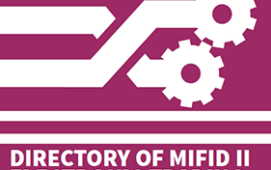
Earlier this month, Genesis Global, the low-code application development framework provider, announced significant updates to its Genesis Application Platform, aimed at simplifying and expediting software development for financial markets firms. As well as new features designed to enhance the development process for banks, asset managers, and trading infrastructure providers, the updates – driven by the release of Version 8 of the platform (G8) – introduce risk-free trials, usage-based pricing, and a new Marketplace of pre-built components.
In this exclusive interview with TradingTech Insight, Genesis CEO Stephen Murphy discusses the new update, how the company works with its partners and clients, and why ‘buy-to-build’ is such an important strategic trend in the financial markets sector.TTI: Stephen, can you elaborate on the rationale behind introducing usage-based pricing and risk-free trials in G8? How do these changes help clients better understand the value scaling of your platform and benefit from its flexibility and cost efficiency in developing and deploying trading technologies?
SM: Our aim with the usage-based pricing was to disrupt the traditional pricing model. Our platform accelerates development, allowing applications to be built in days rather than months or years. However, with traditional pricing, it can be challenging for clients to understand how such value scales from an MVP to a full production system. We explored various pricing models and, by reverse engineering our previous pricing for other trading technology solutions, we found that usage-based pricing based on virtual CPUs was the most effective metric. This approach resonates with clients because the need for more CPUs correlates with the complexity, number of users, or volume of transactions, aligning with their perception of the platform’s value. And it follows a tiered consumption model: from 0 to 10 CPUs, it’s $x per CPU; from 10 to 25, it’s $x minus 20%, and so on, so as usage increases, the per-CPU price decreases.
With the risk-free trials, we now offer a trial period with a nominal developer charge, meaning clients only incur costs at runtime, whether in a test or production environment. Our clients appreciate this low-risk, low-cost way to prototype and test new ideas quickly.
It’s also important to note that our platform is cloud-agnostic. Clients can run it on their private virtual machines, on-prem infrastructure, in their private cloud, or on public clouds like Amazon, Google, or Microsoft. Clients value this flexibility, as it allows for a multi-cloud strategy without incurring substantial fixed costs from a single cloud vendor. This also enables them to back up against different cloud providers.
TTI: Can you explain the different categories within the new Genesis Marketplace in G8 and how each category helps expedite the creation of trading and risk management applications in financial markets?
SM: The Marketplace comprises three different categories. The first category includes off-the-shelf solutions, such as the Trade Allocation Manager (TAM), a post-trade allocation confirmation system, and the Automated Quoting System (AQS), a multi-asset class quoting application that supports RFQ business flows between investment firms and their treasury desks or broker-dealers. We are continually expanding these solutions. The second category consists of specific industry vendor integrations, such as Bloomberg TOMS. The third category is what we call components, which perform specific functions commonly found in financial applications. These are a combination of integration and workflow and include things like alerts, reporting, user management and FIX gateways.
When you use our platform, you have access to all three categories within the Marketplace. We are heavily investing in expanding the Marketplace so developers can utilise these components, with only a nominal developer fee, and pay based on CPU usage. We see this as a significant disruption to the traditional buy versus build paradigm.
TTI: How do your strategic partnerships with major financial institutions like Bank of America, BNY Mellon, and Citi influence the development direction of the Genesis platform? Can you elaborate on their role in shaping your product offerings and training initiatives?
SM: They play a crucial role. We have a strategic investor forum with these partners every six weeks, where they help guide our platform roadmap based on feedback from all our clients. We gather extensive input from clients about the functionalities and solutions they are building, or would like us to build within the platform, giving us a comprehensive understanding of their needs.
Accessibility and ease of use are major priorities for our partners because they want to get large groups of developers on Genesis. So we’ve focused heavily on our training program, the Genesis Academy. Initially, we were doing a lot of the development work for our clients ourselves, but this has now shifted significantly. Our investors provided invaluable feedback on training materials, documentation, certification programmes, and what we call developer enablement and evangelism. They also wanted the ability to scale through their systems integrators and consulting partners, so we’ve collaborated with these parties to enable them to use the platform effectively.
A lot of the feedback revolves around the tools they want to see in the platform product roadmap, as each partner has different requirements. For instance, BNY Mellon, the largest custodian in the world, is using the platform to drive new business innovation. Citi and Bank of America are exploring how the platform can support new consortium opportunities or innovate around existing consortia.
Regarding tooling, we’ve recently released Genesis Create, a web-based tool that allows users to create new applications in minutes, and Genesis View, which enables rapid UI development by converting screenshots into UI code, using generative AI. It’s immensely valuable to have strategic investors who are deeply invested in our technology roadmap.
TTI: G8 includes enhancements in desktop interoperability and improved FDC3 support. How do these enhancements facilitate better integration and communication between different trading systems and platforms, and what role do open APIs play in this process?
There’s a lot happening around desktop interoperability, and interoperability in general. All our UI components are FDC3-ready out of the box. We are completely vendor-agnostic, working seamlessly with platforms such as OpenFin and interop.io on the desktop interoperability side, where we continue to expand our FDC3 capabilities. And with Genesis Create, you can enable FDC3 for your UI components from the outset.
We’ve always maintained an open approach, with open APIs from the beginning. On the server side, our technology integrates with various vendor systems such as Murex, Calypso, Fidessa, TT, ION, SS&C, Bloomberg, and Symphony. Whether it’s server-side data integration or technical APIs like REST and MQ, we ensure quick data transfer. Additionally, we support industry-specific protocols such as FIX and SWIFT, maintaining openness and flexibility across our platform.
TTI: What impact have the free trials and training had on client adoption, and how are consulting partners contributing to this new approach?
SM: We’ve received excellent feedback from our current clients, many of whom previously used our managed applications or products. They’ve expressed that they always wanted to use the platform, and now, with no real barriers to entry, they can. They can start using it for free, get comprehensive training, and access the Marketplace. They are only charged at runtime, once they see the value in a test or production environment. We’ve also engaged with new clients who had heard about us but hadn’t interacted with us before. They now understand how to engage with us, and clients who weren’t platform users but had specific solutions built by us can now see how scalable and user-friendly our technology is, thanks to the tooling and extensive training materials we provide. The pricing model also makes sense to them.
We also collaborate closely with consulting partners, who find this proposition very appealing. Previously, they focused solely on the professional services aspect, but now they can also participate in revenue shares by introducing new clients and implementing solutions for them. This approach encourages the entire industry to think differently about the buy versus build dilemma, or what we now call ‘buy to build’. This model allows clients to enjoy the benefits of both buying a solution and having the flexibility to build on it. This concept has really resonated with our client base.
TTI: To wrap up, where do you see the most significant opportunities for software innovation in the financial markets industry, and how does Genesis help firms address their innovation backlogs?
SM: There are several areas, but I’ll highlight two key ones. Firstly, there’s a significant focus on replacing spreadsheets and end-user computing systems. This process can be very complex because it’s not just about the spreadsheets themselves but also the workflows and how these spreadsheets are communicated within an organisation. These systems often have numerous integrations, with data being uploaded and downloaded between different systems. We see a lot of work in this area.
Another critical area is vendor consolidation. We frequently get asked if we can replace a specific vendor. However, rather than simply ripping and replacing existing systems, we excel at what we call ‘vendor scaffolding’. This approach involves integrating our technology on top of, next to, below, or around existing vendor technologies. It enables clients to start innovating quickly around their current technology stacks. Additionally, this method allows for the clean-up and optimisation of the existing vendor technology implementation. Vendor scaffolding is a significant use case because it enables clients to innovate rapidly without the substantial risk of replacing entire systems.
TTI: Thank you, Stephen
Subscribe to our newsletter





